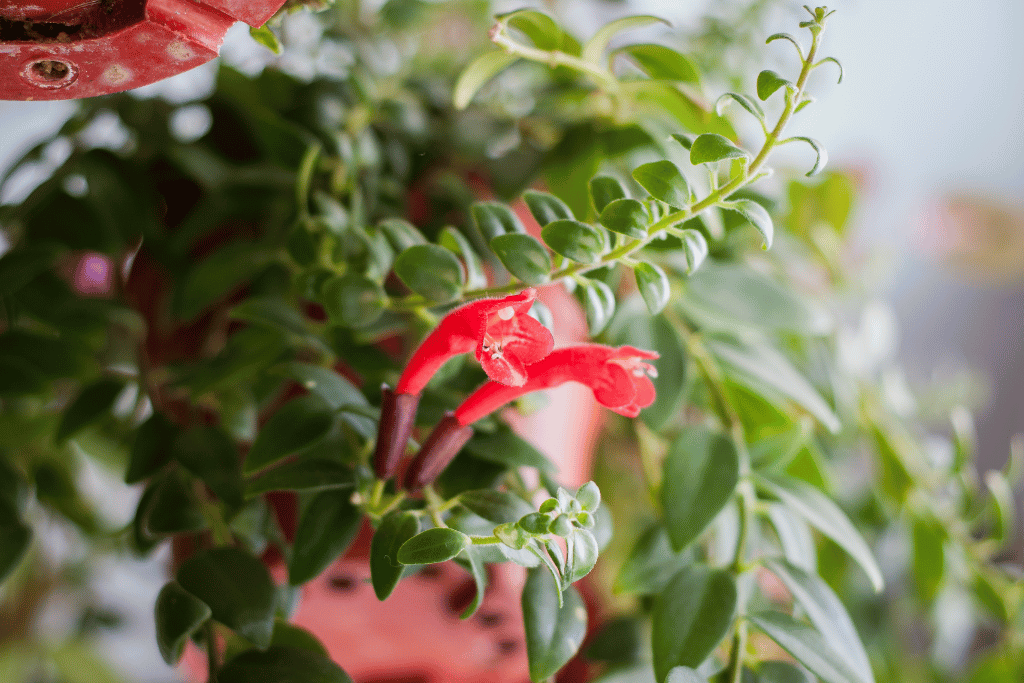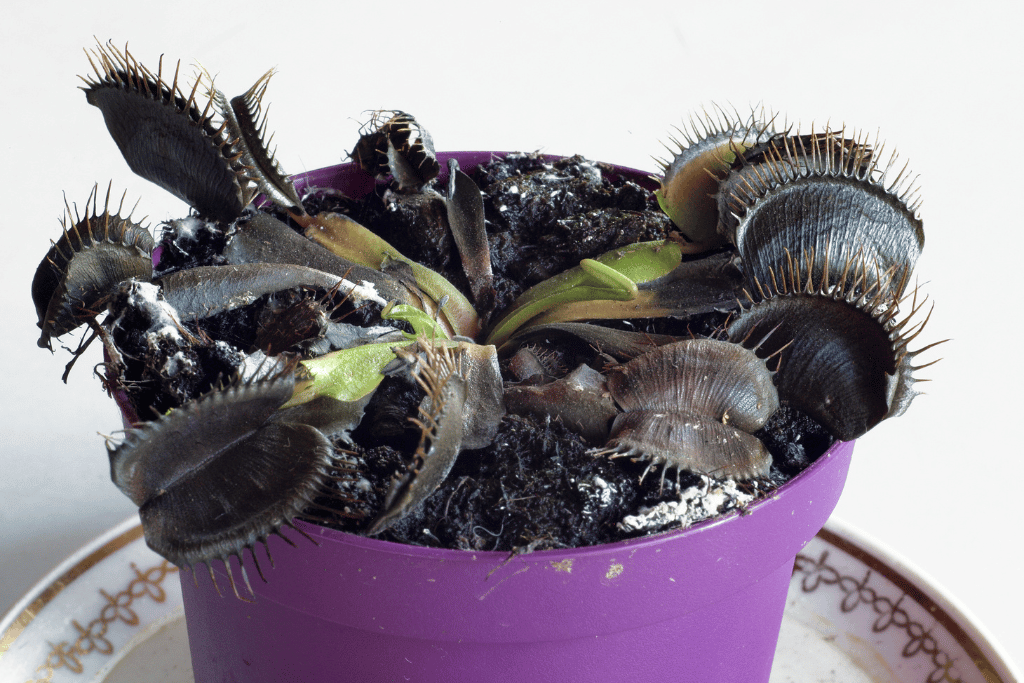
Imagine my shock when I discovered that my beloved Venus fly trap was gradually turning black. The once vibrant and captivating plant that had caught my attention with its mesmerizing traps was now cloaked in darkness.
Questions raced through my mind: Why is my Venus fly trap turning black? Is it a sign of impending doom, or is there still hope for its survival? Let’s find out:
Venus Fly Trap Heads Turning Black: A Troubling Sight
The sight of my Venus fly trap’s heads turning black was undeniably alarming. Those distinctive green heads, once brimming with life and vigor, now appeared ominously charred. What could have caused such a transformation?
Upon closer examination, I discovered that the blackened heads were not a result of some nefarious curse, but rather a natural occurrence. When the Venus fly traps and consumes insects, the process of digestion is initiated, leaving behind a residue that darkens over time. This darkening is a normal part of the plant’s life cycle and indicates that the trap has successfully fulfilled its purpose.
Venus Fly Trap Leaves Turning Black: Lack of Light
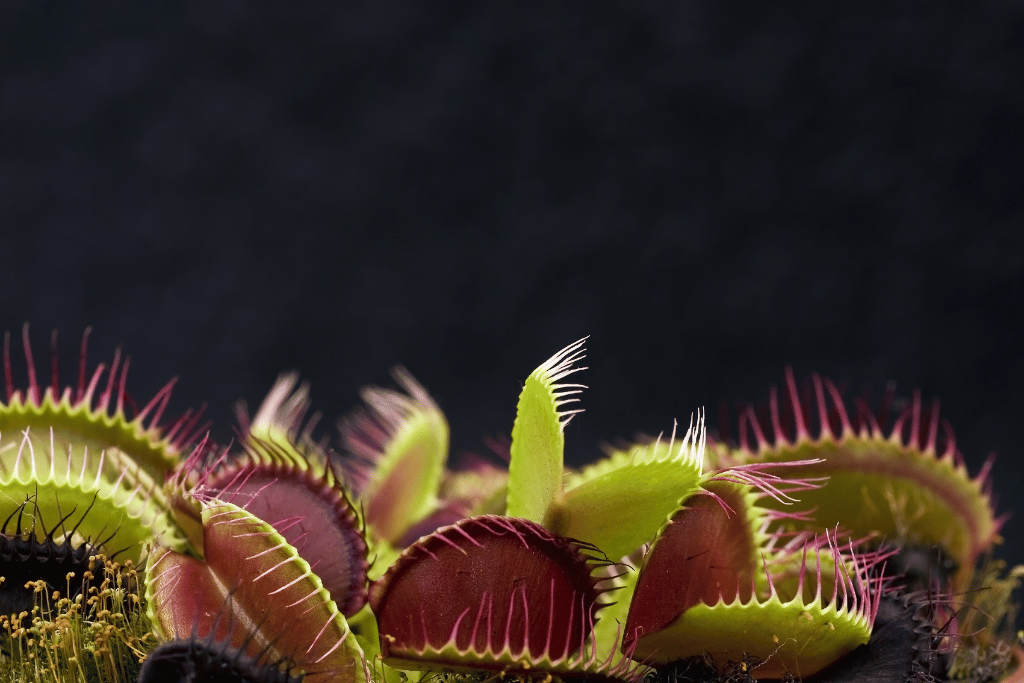
As I observed the blackening of my Venus fly trap’s leaves, I unraveled a crucial factor contributing to this phenomenon: the lack of light. These captivating plants rely on bright, indirect light to flourish, and when deprived of it, their leaves respond by darkening or turning black.
Venus fly traps have evolved to thrive in environments with ample light. Sunlight provides the energy necessary for photosynthesis, a process that enables plants to convert light into food. When these plants don’t receive sufficient light, their leaves struggle to produce chlorophyll, the pigment responsible for their vibrant green color. Consequently, the leaves darken, taking on a black hue.
The darkening of Venus fly trap leaves due to lack of light serves as a signal, highlighting the plant’s need for more adequate lighting conditions. It’s crucial to ensure that your Venus fly trap is positioned in a spot where it can receive bright, indirect light for several hours each day. Placing it near a window or using artificial grow lights can help provide the necessary light intensity.
When a Venus fly trap receives proper lighting, its leaves regain their vibrant green coloration, indicating their ability to carry out photosynthesis effectively. However, it’s important to strike a balance, as excessive exposure to intense sunlight can also cause leaf burn and subsequent blackening.
Venus Fly Trap New Growth Turning Black: A Call for Patience
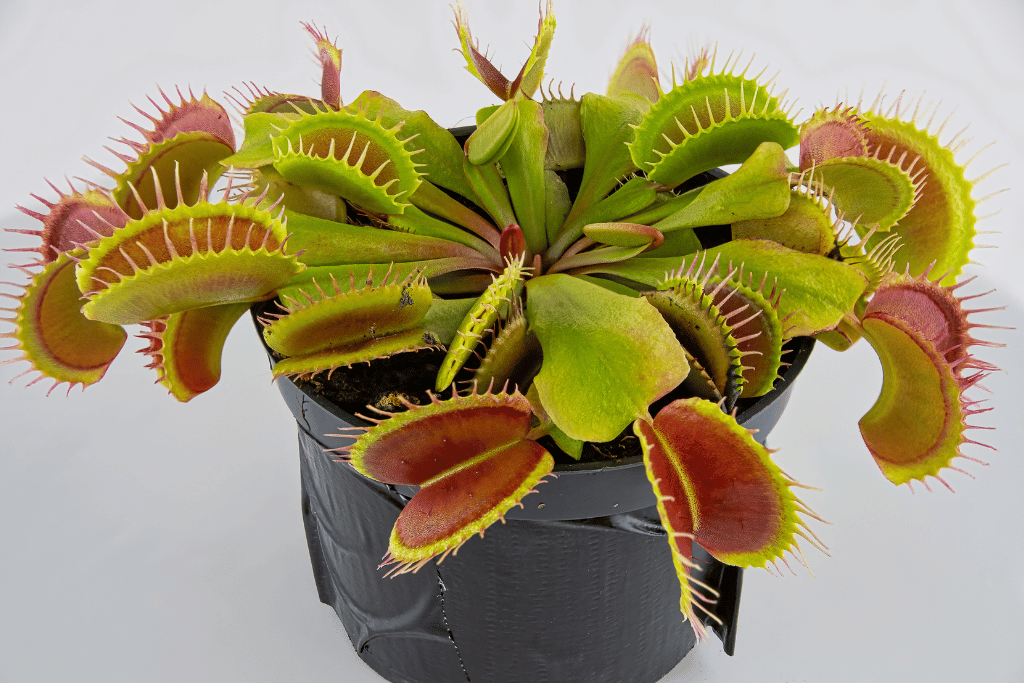
The discovery of blackened new growth on my Venus fly trap initially sent me into a panic. Was this a sign of disease or distress? However, I soon learned that this occurrence is relatively common and not necessarily a cause for alarm.
When a Venus fly trap produces new leaves, they start off as small, pale green sprouts. As these leaves mature and develop, they gradually darken, transitioning from their initial pale hue to a more intense green and, eventually, black. This process is natural and signifies the healthy growth of the plant.
It is crucial to exercise patience when observing new growth turning black. While it may be disconcerting at first, it is merely a sign that your Venus fly trap is thriving and adapting to its environment.
Venus Fly Trap Turning Black: Is it Okay to Cut?
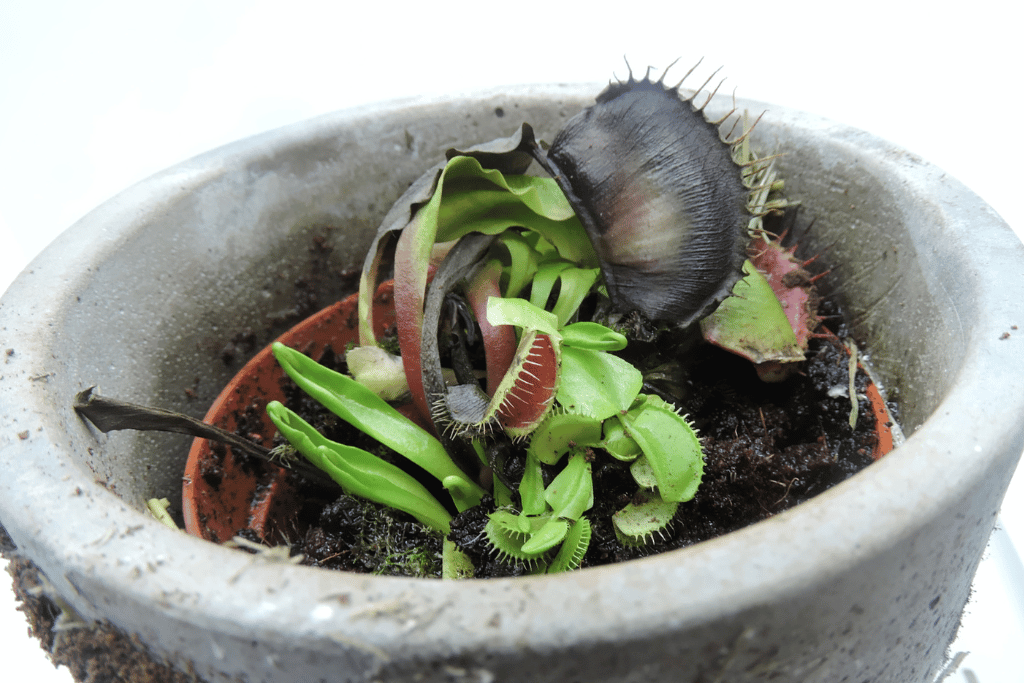
Is it acceptable to cut the blackened sections? In most cases, the answer is yes, but with caution.
The blackened areas of a Venus fly trap serve important purposes in the plant’s life cycle. They may act as protective camouflage or serve as evidence of successful digestion. Cutting these blackened parts prematurely can hinder the plant’s ability to absorb essential nutrients and disrupt its natural cycle.
However, there are instances where it is appropriate to consider removing blackened sections. If the blackened areas become necrotic, meaning they show signs of tissue death or decay, it is advisable to trim them away. Additionally, if the blackened parts exhibit signs of disease or rot, it is crucial to remove them promptly to prevent further spread and potential harm to the plant.
By carefully assessing the condition of the blackened sections, you can determine whether cutting is necessary. It is essential to use sterile tools and make clean cuts to minimize the risk of introducing pathogens to the plant. After removing any blackened portions, monitor the Venus fly trap closely to ensure proper healing and continued healthy growth.
While it may be tempting to trim away the blackened areas for aesthetic reasons, remember that these parts play important roles in the plant’s life. By exercising caution and only removing sections that are necrotic or diseased, you can promote the overall well-being of your Venus fly trap and allow it to continue its fascinating journey of dark transformation.
10 Reasons Why a Venus Fly Trap Turns Black
1. Natural digestion process
One of the most common reasons for a Venus fly trap turning black is its natural digestion process. When the plant successfully traps and consumes insects, the trapped prey is slowly digested. This digestion process leaves behind a dark residue, causing the trap to darken over time.
2. Camouflage for protection
The blackening of Venus fly trap leaves serves as a protective measure. When the leaves have trapped and digested prey, they turn black to blend in with their surroundings, making them less visible to potential predators. This camouflage helps the plant conserve energy and ensures its survival in the wild.
3. Maturation of new growth
New growth on a Venus fly trap initially appears as small, pale green sprouts. As these leaves mature and develop, they gradually darken in color. The transformation from pale green to intense green and eventually black is a natural part of the plant’s growth process and indicates healthy development.
4. Exposure to sunlight
These exotic beauties need plenty of sunlight to live their best life — but too much direct sunshine without enough moisture can cause their leaves to turn black from sunburn. So if you want your plant pal to stay healthy and happy, watch out for those scorching rays! Keep their exposure to intense sunlight at a minimum, and you’ll both be satisfied. It’s time to get started on your journey with these remarkable plants — so have fun! Enjoy the adventure!
5. Nutrient deficiency
If your fly trap is displaying darkening leaves, it could be indicative of an underlying nutrient deficiency – particularly a lack of essential minerals such as iron.
6. Water quality issues
If your Venus fly trap’s leaves are turning black, it could be a sign of improper watering. Using tap water is a big No. It is lousy with chlorine and other harmful elements. To keep the plant in tip top shape, pour it some distilled or rainwater instead! Boom – problem solved.
7. Inadequate watering
Both overwatering and underwatering can lead to blackening of the Venus fly trap. Overwatering can cause root rot and subsequent blackening of the leaves, while underwatering can result in dehydration and stress, causing the plant to darken in response.
8. Temperature extremes
Too much cold or too much heat can be a real drag for Venus fly traps, causing their leaves to turn black. Instead of taking an icy dip in the pool or sunbathing at the beach, keep your VFTs happy by keeping them in moderate temperatures.
9. Insect infestation
Ironically, an insect infestation can also cause a Venus fly trap to turn black. If the plant becomes overrun with pests like aphids or spider mites, it may struggle to capture enough insects for its nutrition. This can result in weakened traps and a darkening of the foliage.
10. Disease or fungal infection
The Venus fly trap is a unique plant that can turn black for a variety of reasons. For instance, too much exposure to the sun, inadequate soil moisture, and improper nutrient balance can all lead to fading or discoloration of its vibrant green leaves. Additionally, diseases and fungal infections can cause an unpleasant blackening of the plant.


